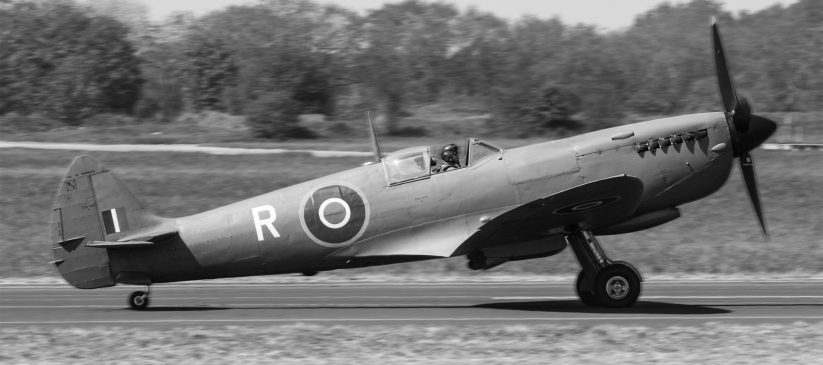
Details:
- Aircraft: Spitfire XI PA929
- Pilot: Michael Aidan McGilligan
- 16 Squadron (PRU)
- Lost: 8 June 1944
- Location: Bletchingley, Surrey UK
Background information:
Spitfire PA929 from No. 16 Squadron, based at RAF Northholt, was lost over Redhill, crashing at Bletchingley, Surrey, on 8th June 1944.
The Pilot was Flt Lt. Michael Aidan McGilligan (111245) who tragically lost his life. It is believed that he lost control in cloud returning from a Photo Reconnaissance (PR) Mission.
Although the records assume that the aircraft lost control in cloud, the unfortunate pilot could just as likely have suffered oxygen failure resulting in him loosing consciousness.
Flt. Lt. McGilligan, an Irishman, was aged just 25, and tragically never witnessed the eventual victory that he and his colleagues had fought so hard to achieve. He is buried in Grave 59 in the Commonwealth War Graves section at Redstone Cemetery just a few miles from where his Spitfire crashed.
Excavation:
On the evening of 12th October 2012 a deep search survey was carried out by Forster Magnetometer. In advance of the excavation which would take place on Sunday 14th October 2012, the locations of the strongest readings were marked on the site using spray paint. The impact point was easy to pick out with a shallow crater still being evident after nearly 70 years.
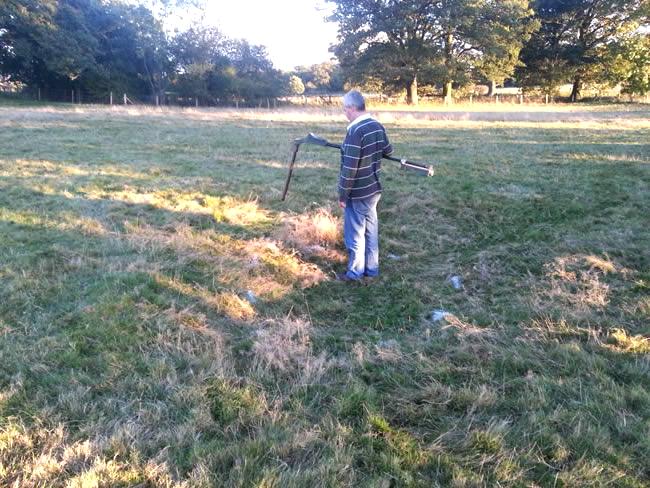
To carry out the excavation, an 8 ton tracked digger was hired by the Wings Museum. This would make digging much easier in the thick clay, and would also achieve a better result when back filling.
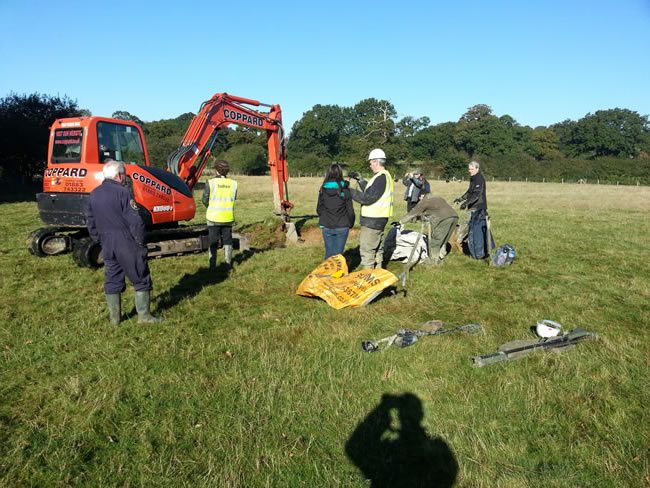
During our research, we had discovered that the site had been dug by hand in the 1970s, and the pilot’s throttle controls, blind flying panel, one instrument face, and a smashed rudder pedal, had been recovered.
On Sunday 14th of October 2012, a small team of volunteers from the Wings Museum gathered to carry out the excavation, and at approximately 10am the dig commenced by first removing the top soil. The digger gently scraped back the layers of clay until slowly but surely a dark stain appeared along with some very corroded fragments of Aluminium. At this point it was clear to the team that much of the wreckage had already been recovered, probably during the recovery carried out shortly after the crash and during the 1970s dig.
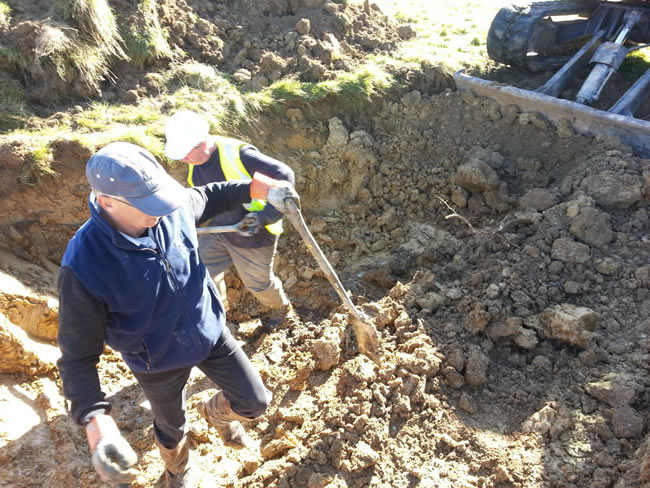
At a depth of about 3 feet, the end spool from an F-24 Reconnaissance camera film was found on the edge of the crater.
At a depth of about 5-6 feet, the smell of aviation fuel filled the air and there was much more evidence of black oil staining from the engine. At this depth a number of fragments of smashed Merlin engine casing and an exhaust stub were discovered along with other minor components relating to the airframe and engine area.
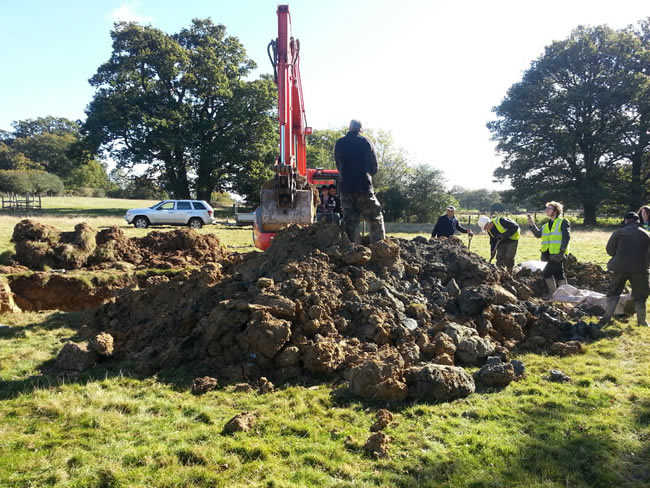
Several fragments of skinning from the airframe were found, still clearly retaining the reconnaissance blue colour of the PRXI Spitfire.
Finally, at a depth of 7 feet, the propeller hub, which was found to be in very good condition, was reached. The constant speed unit from the very front of the engine was also found.
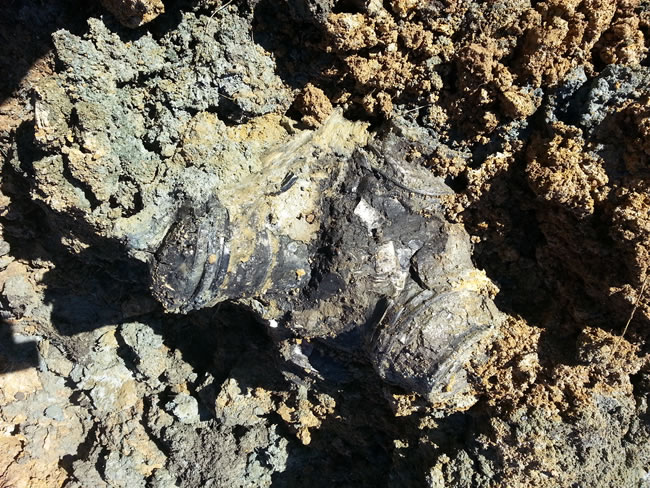
The team then focused on searching through the spoil heap where several more minor components were found.
While the digger slowly began to back fill the excavation, another end plate from an F-24 Camera, this time clearly marked “Spool Reel Camera – AM” and the King’s Crown with a makers mark of “JHT”, were found. Another interesting find was a bayonet fitting from the oxygen mask which was stamped “AM Ref: 6D/526 Mk IV”.
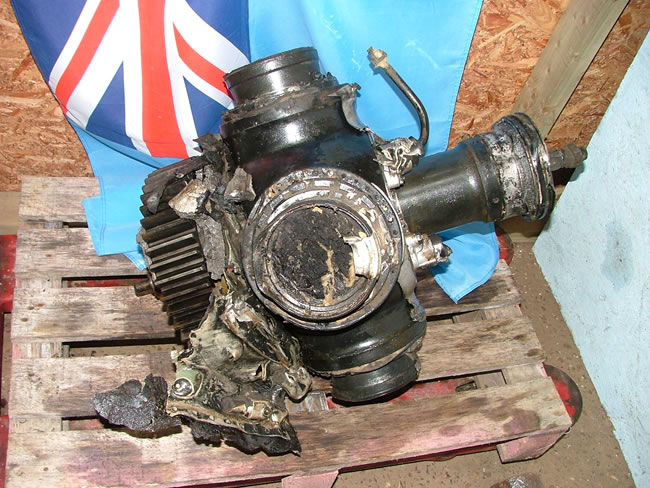
With thanks to all those who helped with the excavation and the MOD for their co-operation. A special thanks to Gareth for his driving skills with the excavator!
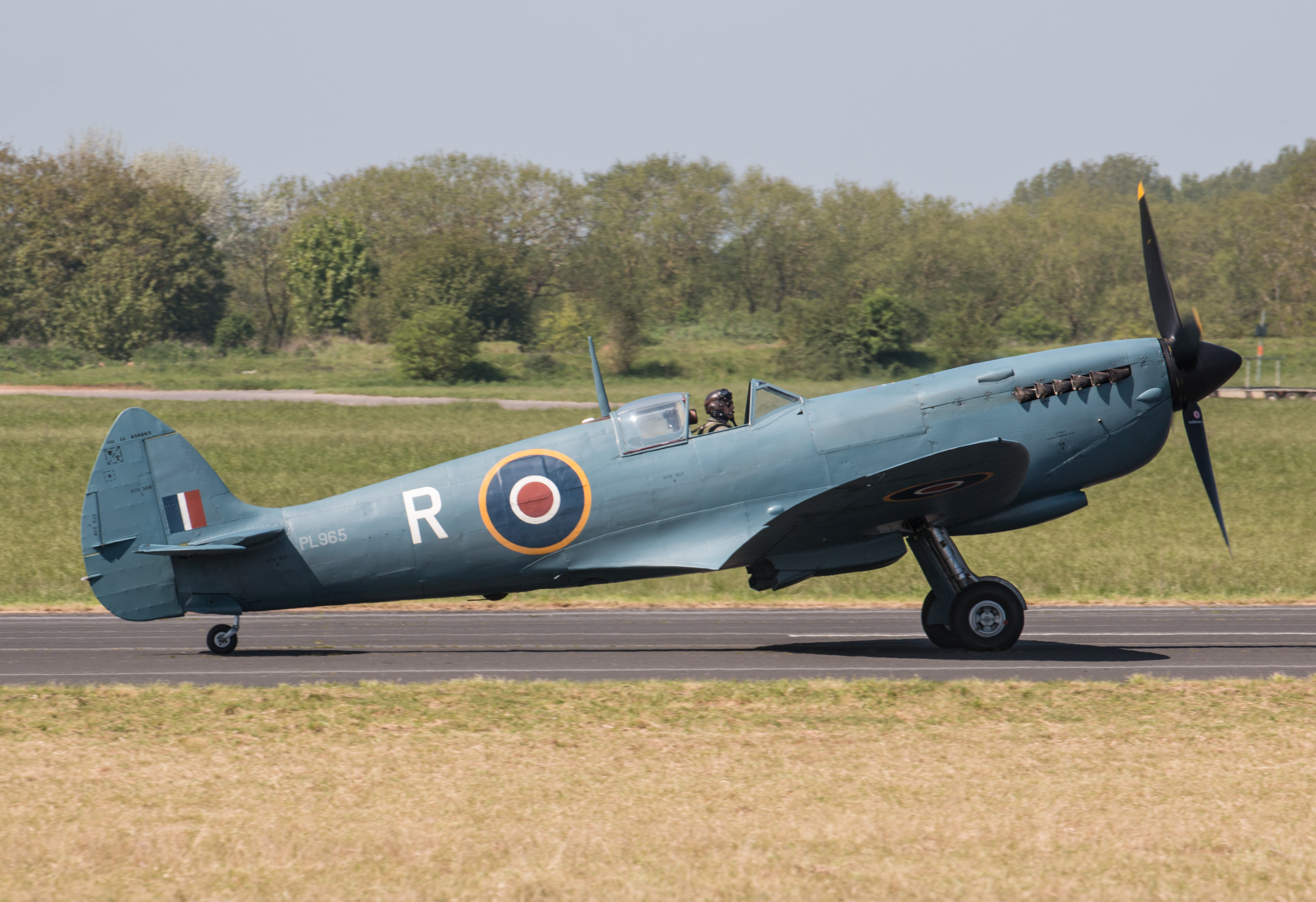
Abingdon Air & Country Show 2018, Oxfordshire
Photo: Steve Lynes – Flickr
licensed under the
Creative Commons Attribution 2.0 Generic license.